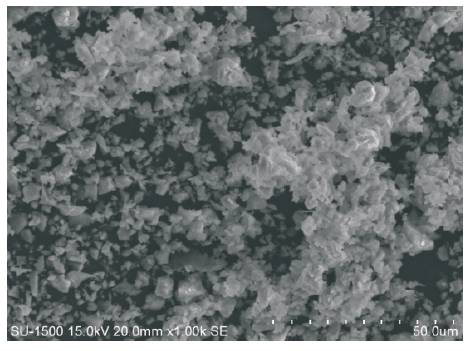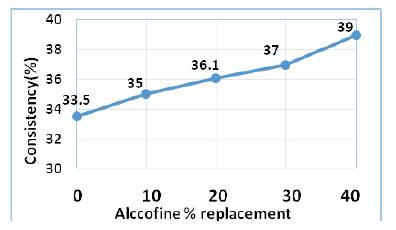
Table 1. Properties of Cement and Alccofine
As the production of cement increases, its adverse impact on the environment also increases. With cement being the second most consumed substance after water, the need to reduce its production is the need of the hour. Replacement of cement by supplementary cementitious materials results in less usage of cement. In this study, cement is partially replaced with reactive microfine, namely Alccofine and the effect of this replacement on the basic properties like standard consistency, initial setting time, final setting time and compressive strength of cement mortar were analyzed. Addition of Alccofine upto 20% has resulted in increase of compressive strength of the mortar cubes, with consistency and setting time values being within the specified limits.
Concrete is the second most consumed substance on earth after water. On an average, each year, three tons of concrete is consumed by every person on the planet. Cement which is the prime ingredient in concrete accounts for about 5% of global carbon dioxide emissions. Cement production which is growing by 2.5 % annually is expected to be in the region of 3.7 to 4.4 billion tons by 2050 (Madeleine Rubenstein, 2012). Hence, it is necessary to find ways to reduce production of cement. Several supplementary cementitious materials like fly ash, ground granulated blast furnace slag, metakaolin and micro silica have been used either individually or in combination for partial replacement of cement. The effects of such additions are found to be useful in developing high performance concretes besides savings in the quantity of cement used.
Alccofine is a microfine material produced by the industry under controlled conditions. Its usage as a partial replacement is expected to be advantageous in enhancing the various properties of concrete. Alccofine helps to refine pore structure of concrete and enhance the strength, durability and concrete rheology apart from being cohesive. However, Alccofine can be used in combination with other supplementary cementitious materials for enhancing the mechanical properties (Ansari et al.,2015), (Siddharth et al., 2014), (Praveen Nayak, et al., 2014).
It is evident that, IS 456:2000 permits usage of fly ash, silica fume, ground granulated blast furnace slag, metakaolin, microsilica and rice husk ash in making concrete. The percentage of cement replacement depends on the type and characteristics of the Pozzolana used. The particle packing in concrete both in macro and micro size analysis plays a vital role to improve performance characteristics like workability, cohesiveness, low permeability, resistance to aggressive chemicals and moisture, compressive/ flexural strength, shrinkage, etc. (AEC Update, 2012).
Ansari et al., (2015), reported that the compressive strength of high performance concrete increases with increase in Alccofine and fly ash content upto 20%. Siddharth et al., (2014) reported that maximum compressive strength can be achieved by using Alccofine 10% and fly ash 30%. Addition of Alccofine increases the self compatibility characteristics like filling ability, passing ability and resistance to segregation. Praveen Nayak et al., (2014) determined that upto 13.36% replacement of cement with Alccofine and micro silica, the compressive, flexural, splitting tensile and impact strength increase. Hassan, (2012) determined that partial replacement of cement with Silica fume upto 15% results in increase in the compressive strength. It was also found that partial replacement of cement with marble powder results in higher compressive strength upto 15% replacement. Perumal & Sundrarajan (2004) determined that replacement of cement with Silica fume upto 10% renders the concrete more strong and durable. Muhit et al., (2013) concluded that water permeability and strength characteristics of high performance concrete can be increased considerably by partially replacing Ordinary Portland Cement with either silica fume or fly ash. Mohammed et al., (2014) reported that by replacing 30% cement with fly ash and Alccofine in varying proportions strength gain was comparatively high. Dilip Kumar & Amitava, (2012) have revealed that at 10 % replacement of cement with silica fume, the maximum compressive strength is higher by 19.6 % than that for normal concrete.
The reported literature speaks about the replacement of cement with the combination of fly ash and Alccofine but not with Alccofine alone. Also most of the experimental research was based on concrete specimens and not on cement mortar. The setting time of the binder is very important in field applications of the binder. There are reports about the consistency and setting time of Alccofine. In the present study focus is on determining the effects of partial replacement of cement with a reactive micro fine, namely Alccofine on the basic properties like standard consistency, initial and final setting time and compressive strength of cement mortar.
Ordinary Portland Cement of 43 Grade as per IS: 8112 (2013) was used in the study. Alccofine 1203 is a micro fine mineral additive for concrete. It was obtained by quenching molten iron slag from a blast furnace in water or steam, to produce a glassy, granular product that is then dried and ground into a fine powder. The physical and chemical properties of cement and Alccofine were tested and is shown in Table 1.

Table 1. Properties of Cement and Alccofine
Scanning Electron Microscope images of cement and Alccofine specimens are shown in Figure 1 and 2. SEM images indicate that both Cement and Alccofine particles are angular in shape. Alccofine particles appear to be finer than Cement particles. Due to higher fineness and hence higher surface area, Alccofine particles appear to agglomerate

Figure 1. SEM image of Cement

Figure 2. SEM image of Alccofine
Commercially available river sand was used in the study. The sand has a specific gravity of 2.62 and conforms to grading Zone II as per IS: 383-1970.
In this study cement mortar was prepared by using OPC, river sand and tap water in various proportions as mentioned in Table 2.

Table 2. Specimen Code
Consistency and setting time tests were conducted on all the paste samples as per IS: 4031 (Part 4)-1988. Compressive strength test was conducted on cement cubes at the age of 3,7 and 28 days, as per IS: 4031-1982 (Part 6). The mortar was prepared in the ratio of 1:3 (1 part of cement to 3 parts of fine aggregates).
The research methodology consists of cement being tested for Standard consistency, Initial setting time, Final setting time and 1:3 cement mortar cubes tested for Compressive strength test. With the results of these tests as bench marks, the same tests were conducted for Cement +10% Alccofine, Cement +20% Alccofine, Cement+ 25% Alccofine and Cement +30% Alccofine. The results were then compared to draw conclusions on the suitability of partial replacement of cement with the microfine.
Cement mortar cubes of size 70.6mm were cast and cured for 28 days in water. Later, cement was partially replaced with the reactive micro fine to cast similar mortar cubes and cured.
The test results of consistency and setting time are shown in Table 3.

Table 3. Standard Consistency and Setting Time Values
It can be seen that for all the specimens, the initial and final setting time are within the permissible limits (100-232 min) as stipulated in IS 8112:2013. However, both the initial and final setting times are found to have reduced as the percentage of Alccofine content increases. It is possible to adjust the initial and final setting time for different types of concretes using admixtures. Thushara et al., (2013) tested samples of a brand of cement at different intervals in a year and found the initial setting time to vary in a range of 120 -130 minutes and the final setting time to vary in a range of 175-185 minutes. This variation held good for different brands of cement. Hence, the setting times varies by some margins, but being within the prescribed limits, is acceptable. The consistency of the specimens is found to increase as the percentage of replacement of Cement with Alccofine increases. This can be attributed the higher fineness of Alccofine and higher water absorption capacity. Sudalaimani & Shanmugha Sundaram (2014) have made similar observations, when cement was partially replaced with a microfine Ultrafine Natural Steatite Powder, in their experimentations. The test results of compressive strength of mortar cubes are tabulated in Table 4.
IS 8112:2013 specifies 3 day Compressive Strength of 23 MPa, 7 day Compressive Strength of 33 MPa, 28 day Compressive Strength of 43 MPa. Against this the actual test values are 27.37, 33 and 46.09 MPa respectively. The compressive strength for CA10 and CA20 are 31.3 and 34.5 MPa at 3 days, 48.75 and 28 MPa at 7days and 60.43 and 50.9 MPa at 28 days. However, the 3, 7 and 28 day strength of CA30 are 17.81, 22.3 and 30.88 MPa respectively, indicating that the critical value of Cement replacement with Alccofine is between 20 and 30 percent. Initially, CA25 was not considered for testing, but once it became apparent that increase in strength begins to reduce for CA30, CA25 testing is done to fix the percentage of Alccofine addition at which the strength begins to reduce. For CA25, the 3day, 7day and 28day compressive strength are 26.08 MPa, 29.7 MPa and 47.2 MPa respectively. These results indicate that replacement of cement by Alccofine by more than 22-23% results in decrease of strength, while upto 20% replacement has shown increase in strength as shown in Figures 3 & 4.

Figure 3. Consitency versus % Alccofine

Figure 4. Setting Time versus % Alccofine
The study has indicated that optimum replacement level of cement with Alccofine is 20%. At this level of replacement, the basic properties of standard consistency, initial setting time, and final setting time are within the limits specified by the relevant IS codes. The compressive strength of the cement mortar increases by about 40.53% at 10% replacement and by about 18.37 % at 20% replacement, and thereafter shows a decrease to reach values below the minimum specified by the codes.
Cement can be replaced with Alccofine by 20%, without any adverse effect on the basic properties of standard consistency, setting times, and compressive strength of cement mortar.